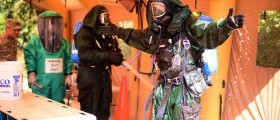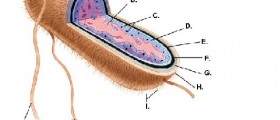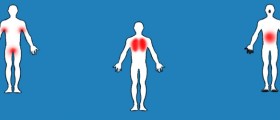
Anthrax - General Info
Anthrax is an acute infectious disease which normally affects animals and may sometimes be transmitted to humans. The disease is caused by bacterium Bacillus antracis. Transmission from animals to humans goes via contact with infected animal or their products. Luckily the disease cannot be transmitted from the affected person to other people.
Bacillus antracis commonly affects animals such as goats, sheep, cattle and horses. The infection can spread to humans in three different ways. The most common path of transmission is through skin. Furthermore, the spores of this bacterium may be inhaled and finally consumption of animal products contaminated with the bacterium represents the third way of transmission of the disease.
Incubation period of anthrax may be rather short and the symptoms usually occur between one and five days after exposure to Bacillus antracis. Still, the incubation is very variable and in some cases the first symptoms occur even after a few weeks.
Bacterium antracis causes three forms of the disease depending on the site of entrance of the spores.
Cutaneous Anthrax
Cutaneous or skin anthrax occurs when the spores of Bacillus antracis enter the skin. This form of anthrax features with red-brown raised spots which tend to enlarge. The surrounding area is red and there is blistering and hardening of the skin. The center of the spot eventually ulcerates. There is blood-tinged drainage from the ulcerated spot and the wound is then covered with black crust. This crust is medically known as eschar. Regional lymph nodes are enlarged and additional symptoms include muscle aches and pain, headache and fever. Patients may also suffer from nausea and vomiting.Inhalation Anthrax
Inhalation or pulmonary form of anthrax develops after bacterial spores are inhaled. Initial symptoms are flu-like, but after a few days they worsen and may even cause serious respiratory distress. Pulmonary anthrax may cause shock, coma or even death. Normally the body reacts and the spores are picked up by specific cells called macrophages. Still, some of the spores reach the chest lymph nodes. This causes severe hemorrhage and tissue death as well as spread of the toxins throughout the body.
Gastrointestinal Anthrax
This form of the disease develops after consumption of undercooked contaminated meat. The symptoms of gastrointestinal anthrax are fever, loss of appetite, nausea, bloody diarrhea, and abdominal pain. The bacterium may invade the intestinal wall and the infection can spread throughout the body. Gastrointestinal anthrax may cause septicemia.
Diagnosis and Treatment for Anthrax
Patient's history, particularly occupation, is very important. The bacterium can be identified in cultures or smears in skin anthrax and in throat swabs and sputum in inhalatory form of the disease. Chest X ray may point to characteristic changes in the lungs.
Treatment for skin anthrax includes antibiotics such as penicillin, tetracycline, erythromycin and Ciprofloxacin. Inhation anthrax is a medical emergency and potentialy life-threatening disease. It requires intravenous therapy with antibiotics.
It is essential that treatment starts as soon as possible since only if treated in early stage anthrax can be cured.

















Your thoughts on this
Loading...